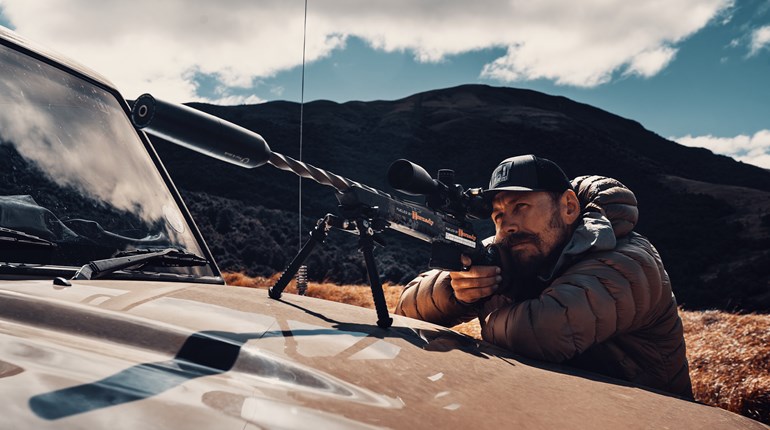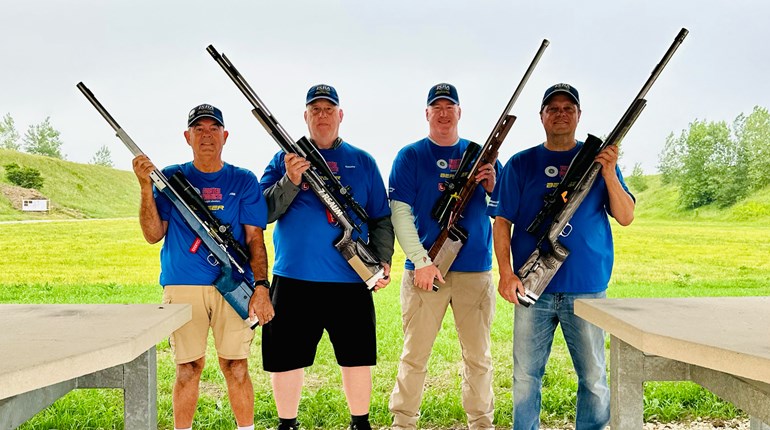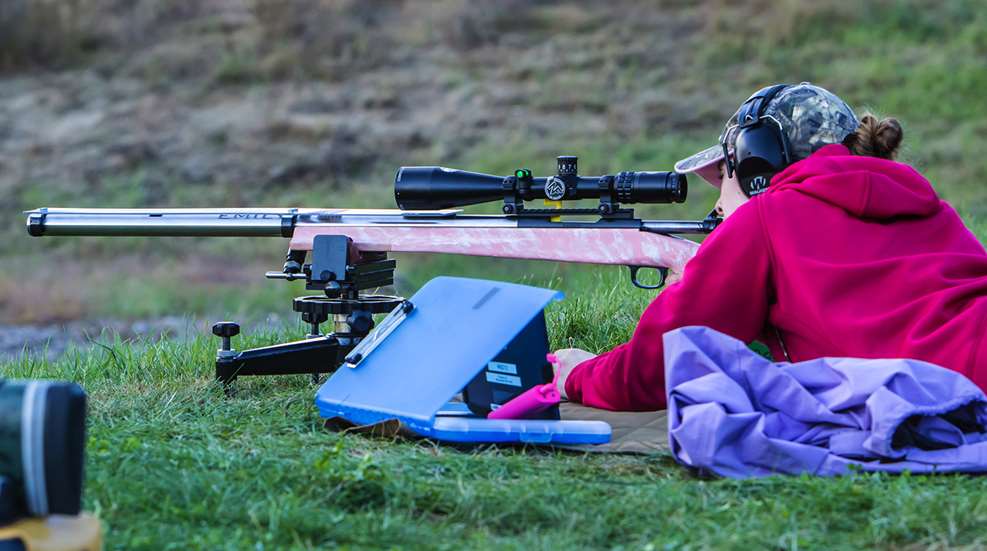
Canadian shooter George Farquharson (the “F” in F-Class) promoted this new discipline in the 1990s. Farquharson’s idea to use scopes and rests was intended to attract long-range shooting enthusiasts who are more familiar with scopes, rests and sandbags than the iron sights, slings and shooting jackets of traditional high power competition. NRA formally recognized the new sport in its 2005 NRA High Power Rifle rules. Former NRA High Power Rifle Manager Janet Raab said, "F-Class is the fastest-growing type of high power competition because it offers the challenge of long-range shooting in a format that is fun and easy to learn."
The Basics of F-Class
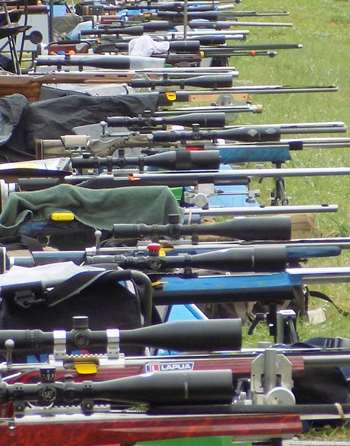
F-Class events are conducted at 300 to 1,000 yards using only the prone position. There are two classes of competition: F-T/R and F-Open. In the F-T/R (target rifle) class, only rifles chambered for unmodified .223 Rem. or .308 Win. cases are permitted, along with a bipod and rear sandbag for support and a maximum total gun weight of 18.18 pounds (bipod attached). F-Open rifles can be chambered for any cartridge up to .35 caliber, weigh no more than 22 pounds, have a maximum fore-end width of 3 inches and can be shot using a front tripod rest and separate rear sandbag. Muzzle brakes are not allowed in either class.
F-Class shooters often compete alongside other competitors in Palma and long-range high power matches.There are, however, dedicated F-Class matches such as the U.S. NRA F-Class National Championships. Most frequently, F-Class competition entails one or more matches of 10 to 20 shots at 600 and 1,000 yards. Alternately, the course-of-fire may mirror that of Palma long-range matches with 15 shots for record at each of three distances: 800, 900 and 1,000 yards.
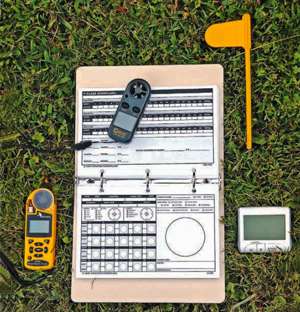
Early on, F-Class shooters used standard NRA MR (mid-range) and LR (long-range) targets. But the 1 MOA X-rings and 2 MOA 10-rings proved too easy for skilled shooters. In 2007, new F-Class targets (MR-FC and LR-FC) were officially adopted with 1⁄2 MOA X-rings and 1 MOA 10-rings. The overall size of the target paper and black bullseye remained unchanged.
You don’t need to spend thousands of dollars on a target rifle to be competitive or, more importantly, to have fun. To shoot in the F-T/R class, most reasonably accurate .223 Rem. or .308 Win. rifles with a 24-inch barrel or longer will suffice. Many shooters simply use heavy-barreled factory guns from companies like Remington, Ruger, Savage or Winchester. These generally cost $1,000 or less and often group into 1 MOA at 1,000 yards with good handloads.
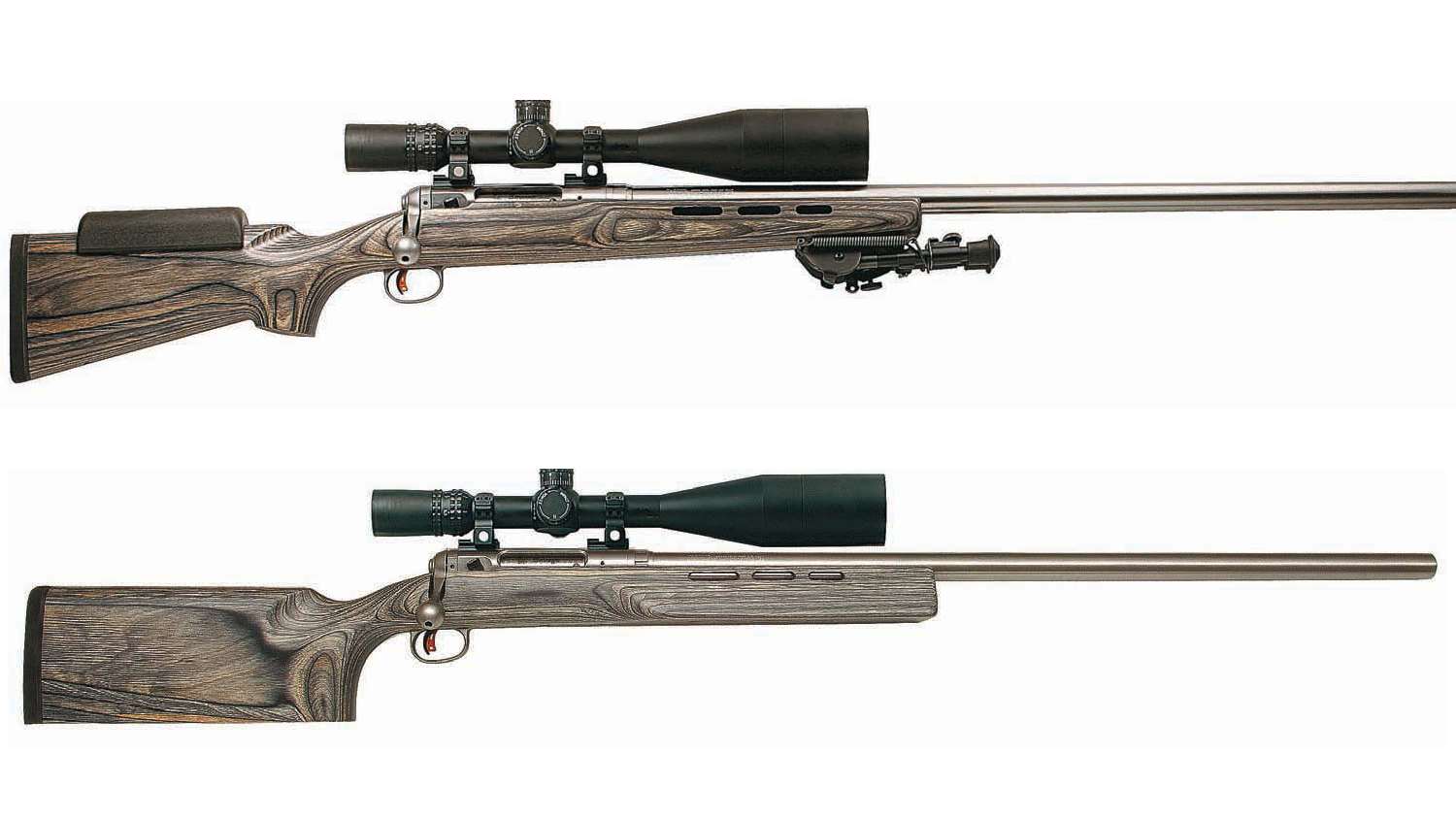
Custom F-Class rigs usually combine a rigid single-shot turnbolt action with a match-grade 28- to 32-inch barrel, a trigger in the 12- to 32-ounce range, and a prone stock of laminated wood, synthetic material or solid aluminum. Stocks for F-Open rifles usually feature a flat-bottomed 3-inch-wide fore-end and a buttstock with a flattened belly that is parallel to the bore for straight tracking of recoil. Most .223 Rem. and .308 Win. match rifles are easily adapted for F-T/R shooting by attaching a bipod to the accessory rail. Match rifles to be used for F-Open can be fitted with a Sinclair Forend Benchrest Adapter—a 3-inch-wide accessory plate that rides the front sandbag for stability.
Savage Arms offers two factory F-Class rifles—the Model 12 F-T/R in .308 Win. and the Model 12 F in 6.5-284 Norma—both with special single-shot actions, extra-heavy 30-inch stainless-steel target barrels and Accu-Triggers adjustable from 6 ounces to 2 pounds. The Model 12 F’s stock has a 3-inch-wide fore-end and a flat-bottomed butt designed to ride sandbags. The 12 F-T/R and 12 F are reasonably priced at $1,538 and $1,648, respectively, and are both capable of 1⁄2 MOA with handloads.
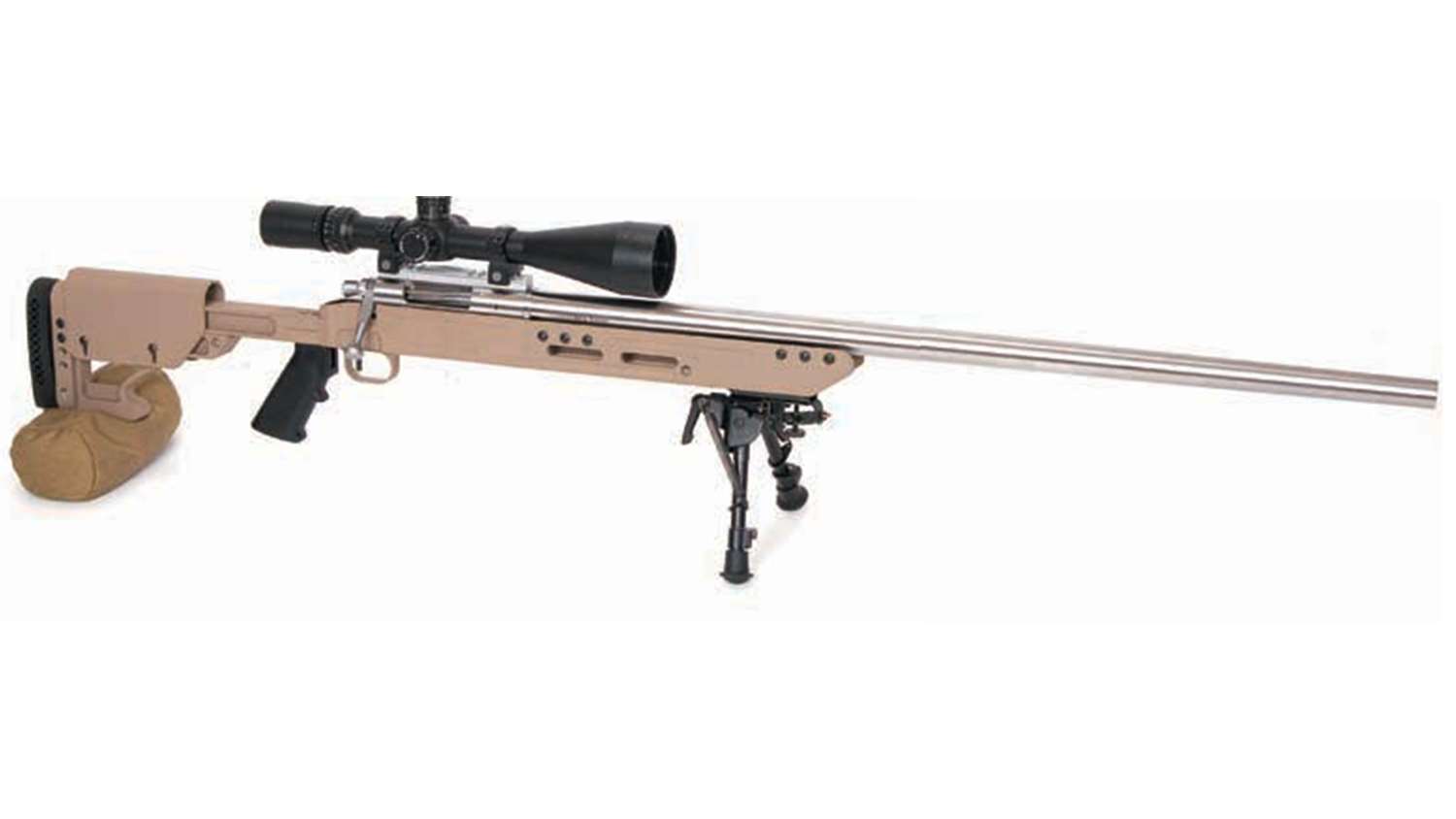
Though most F-Class rifles are of bolt-action design, target-grade semi-automatic rifles can also compete effectively. My own heavy-barreled DPMS LR-6.5, in 6.5 Creedmoor, gives sub-MOA groupings at 1,000 yards and affords reduced recoil and the luxury of maintaining my firing-hand grip throughout a string of shots.
Cartridges
All loads for F-Class have one thing in common: they employ hollow point boattail match bullets having high ballistic coefficients. Ballistic coefficient (BC) is a number, usually less than 1.0, representing a projectile’s aerodynamic efficiency: The higher the BC, the more retained velocity, less drop and wind deflection. Generally, a BC of .450 to .500 or higher with a muzzle velocity of at least 2,650 fps is desirable to keep the bullet supersonic at 1,000 yards.
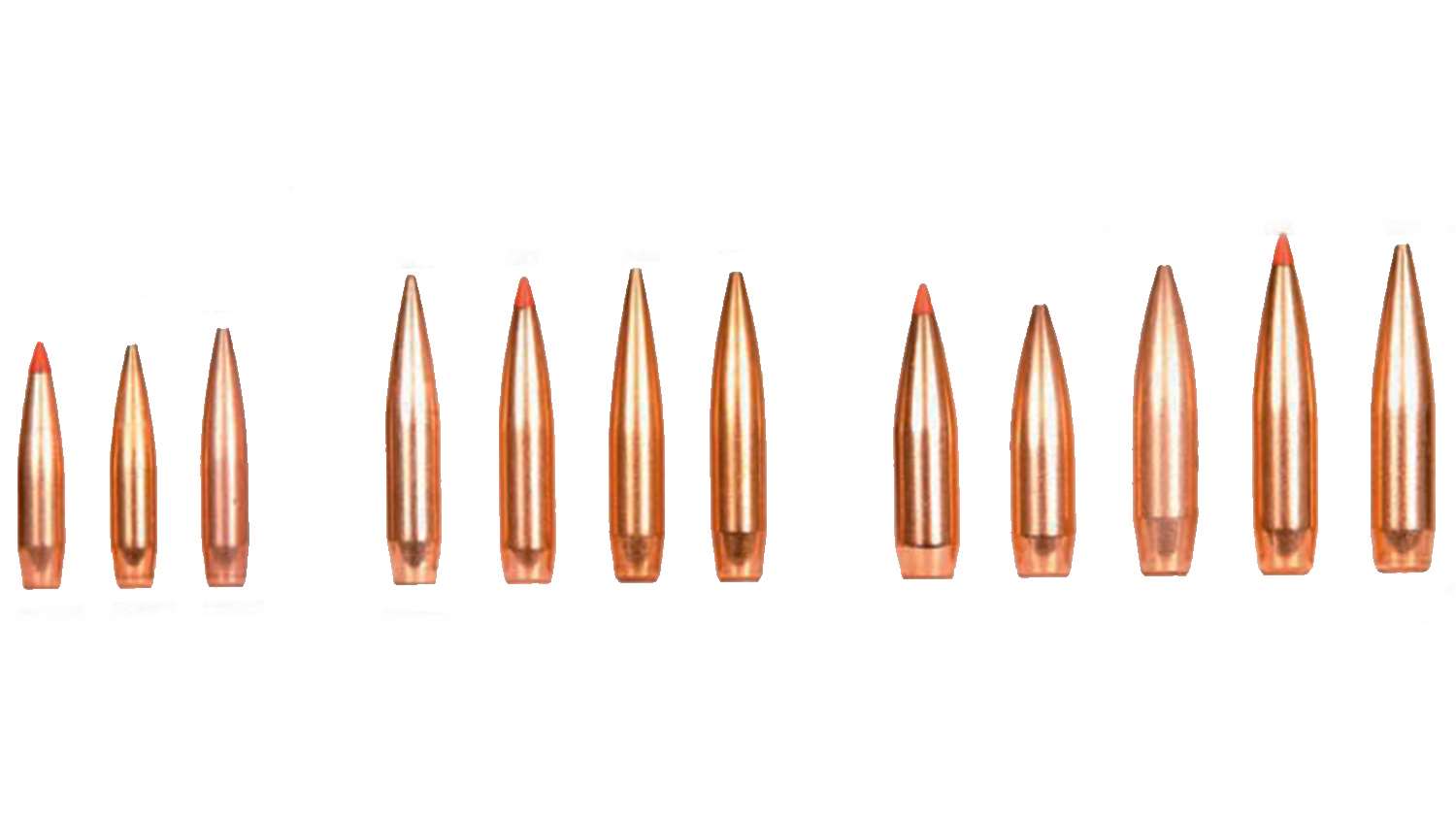
F-T/R loads for the .223 Rem. most commonly feature 75- to 90-grain .224-caliber bullets, while .308 Win. F-T/R loads use 175- to 210-grain .30-caliber bullets. F-Open chamberings generally run the gamut from 6mm cartridges (such as the 6mm BR, 6XC and .243 Win.) up to .30-caliber magnums. An overwhelming favorite is the 6.5-284, a one-time wildcat made by necking down the .284 Win. case for .264-diameter bullets. The popularity of this cartridge is attributable to the available variety of high-BC 6.5 mm match bullets, sufficient case capacity to drive these bullets to 3,000 fps and lower recoil than magnum loads. Short barrel life—800 to 1,200 rounds on average, is the cartridge’s main drawback.
The performance and wide selection of .264-caliber match projectiles has also made other 6.5 mm cartridges popular, such as the 6.5X55 Swedish, .260 Rem. and the Hornady 6.5 Creedmoor. Factory 6.5 Creedmoor ammunition drives 140-grain A-MAX competition bullets to around 2,900 fps out of a 30-inch barrel with groups of 1⁄2 MOA or less in a match-grade rifle. For most shooters, 7 mm and .30-caliber magnums are probably at the limit of recoil tolerance. Such cartridges allow the use of heavy match bullets with even higher BCs than the projectiles used in the 6.5-284.
Almost all F-Class shooters use reloaded ammunition for economy and maximum performance. However, for new shooters just trying out the sport or for those lacking the time or equipment to reload, accurate factory match ammunition is available in .223 Rem., .308 Win., 6.5-284, 6.5 Creedmoor and .300 Win. Mag.
Scopes
The F-Class riflescope is arguably as important as the rifle itself, since you can’t hit what you can’t see. Most favored are high-end variable scopes with 30 mm or larger main tubes, target turrets with at least 40 minutes of elevation, target reticles, parallax adjustment, and magnification ranges from about 4.5-14X to 12-42X. Leupold and Nightforce scopes are seen most frequently in F-Class tournaments, but many other high-quality scopes are also suitable. Single-power scopes, such as 20 to 36X benchrest models can also be used. Generally lighter than similar-magnification variables, single-power scopes may be preferred when every ounce must be shaved to make the weight limit.
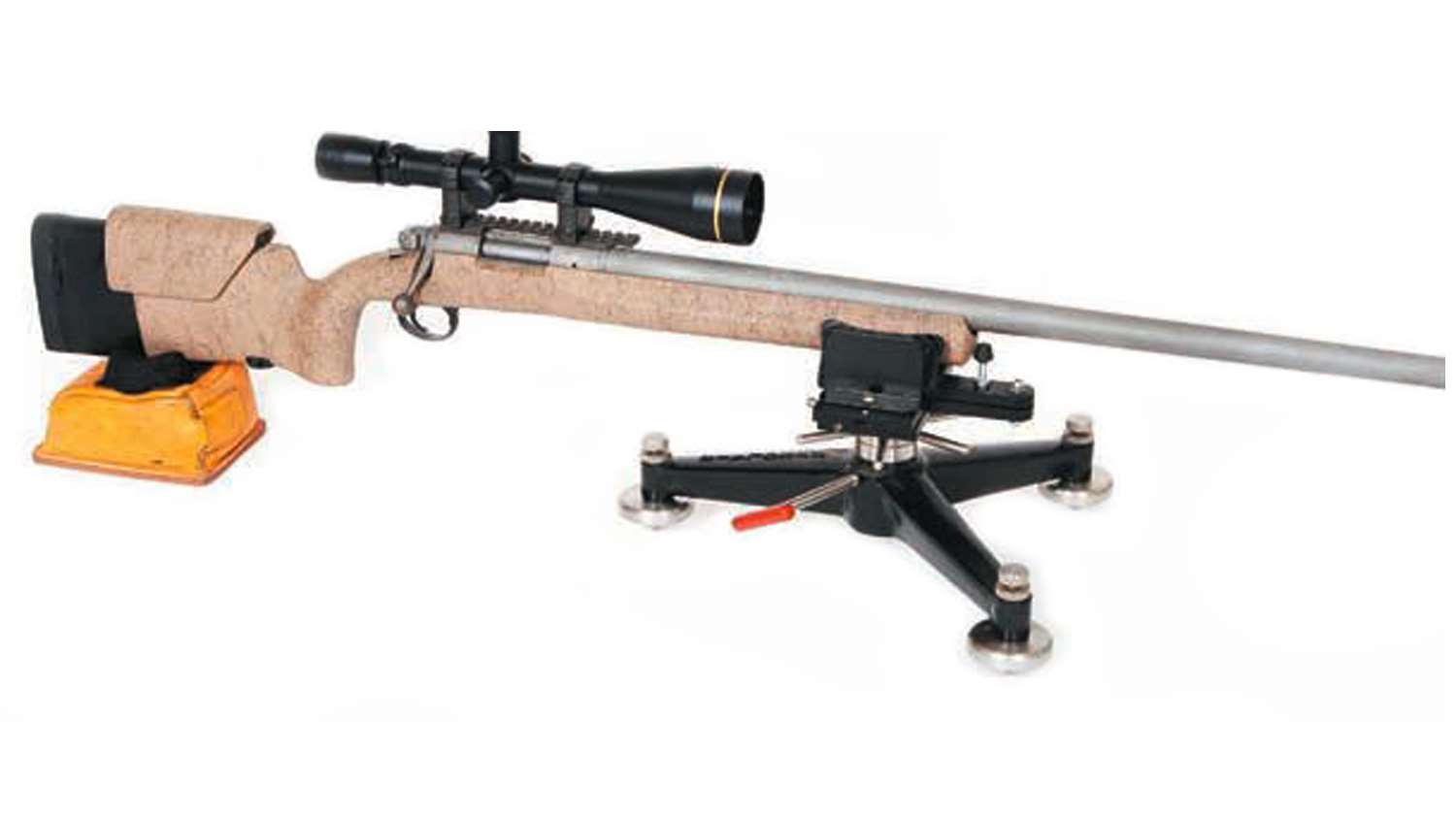
Rests
F-T/R shooters will select from the ubiquitous Harris bipod, with some opting for Versa-Pod, Parker-Hale or Sinclair F-Class bipods. For F-Open shooters, front support normally takes the form of a tripod rest such as from Bald Eagle, Caldwell, Ransom, SEB, Sinclair, Wichita and others. Rear support is pretty much the same for both classes: a sandbag of some sort—the heavier and more rigid, the better.
Although tripod rests tend to be favored among F-Open shooters, just about any type of non-mechanical rest, even a rolled-up coat or blanket, is legal for competition. Note that use of a front or rear support is not mandatory in F-Class, and indeed a few shooters use just a sling.
Accessories
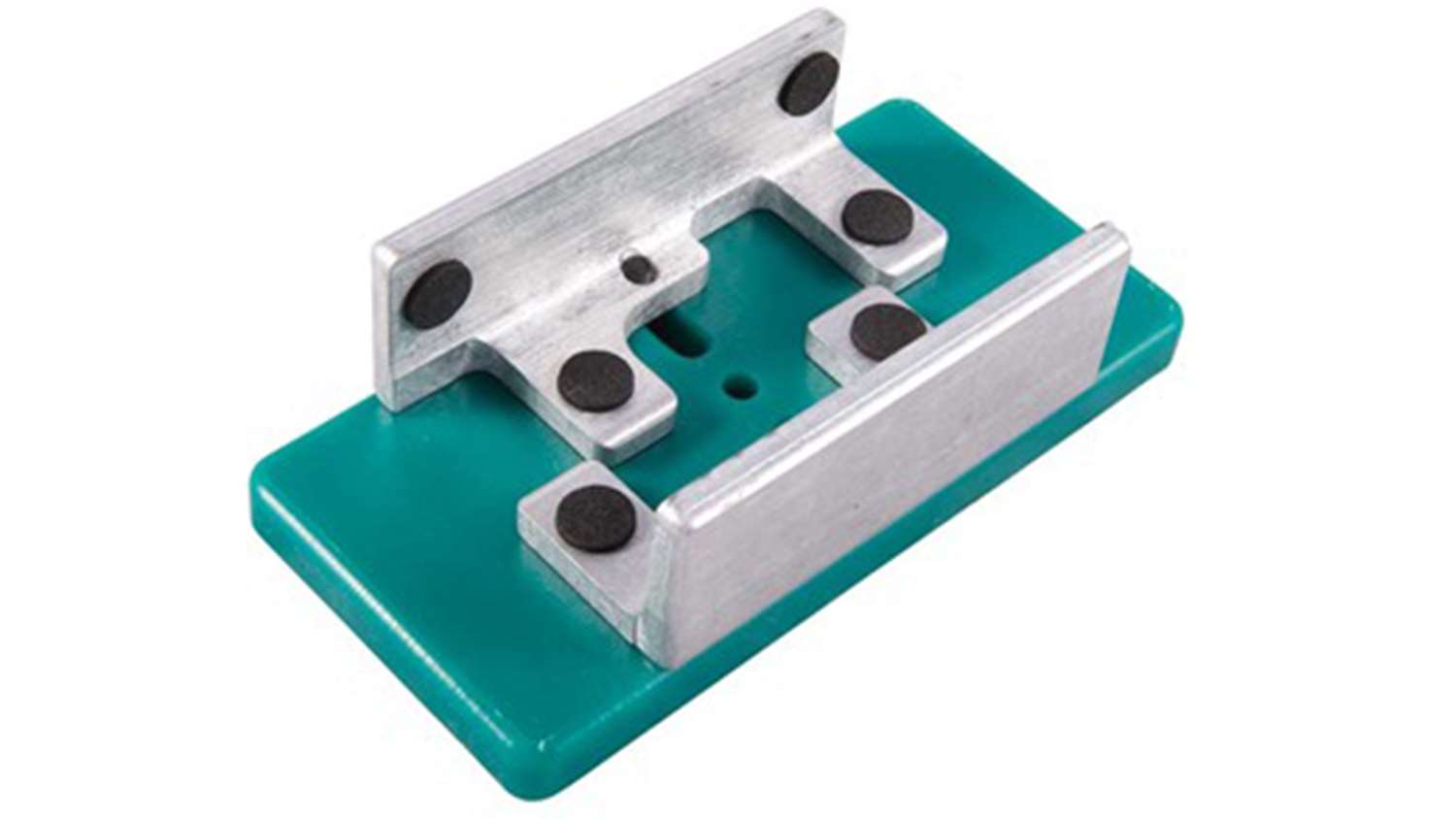
F-Class competition requires little more than a scoped rifle with bipod, eye and hearing protection, an empty chamber indicator, a rear sandbag, and ammunition. There are, however, accessories that make shooting easier such as a shooting mat, spotting scope, timer and a hand-held wind meter. Also useful is a logbook, such as the F-Class book from Impact Databooks, which allows each shot to be individually plotted, along with the prevailing conditions and the “call” of the shot.
F-Class Skills
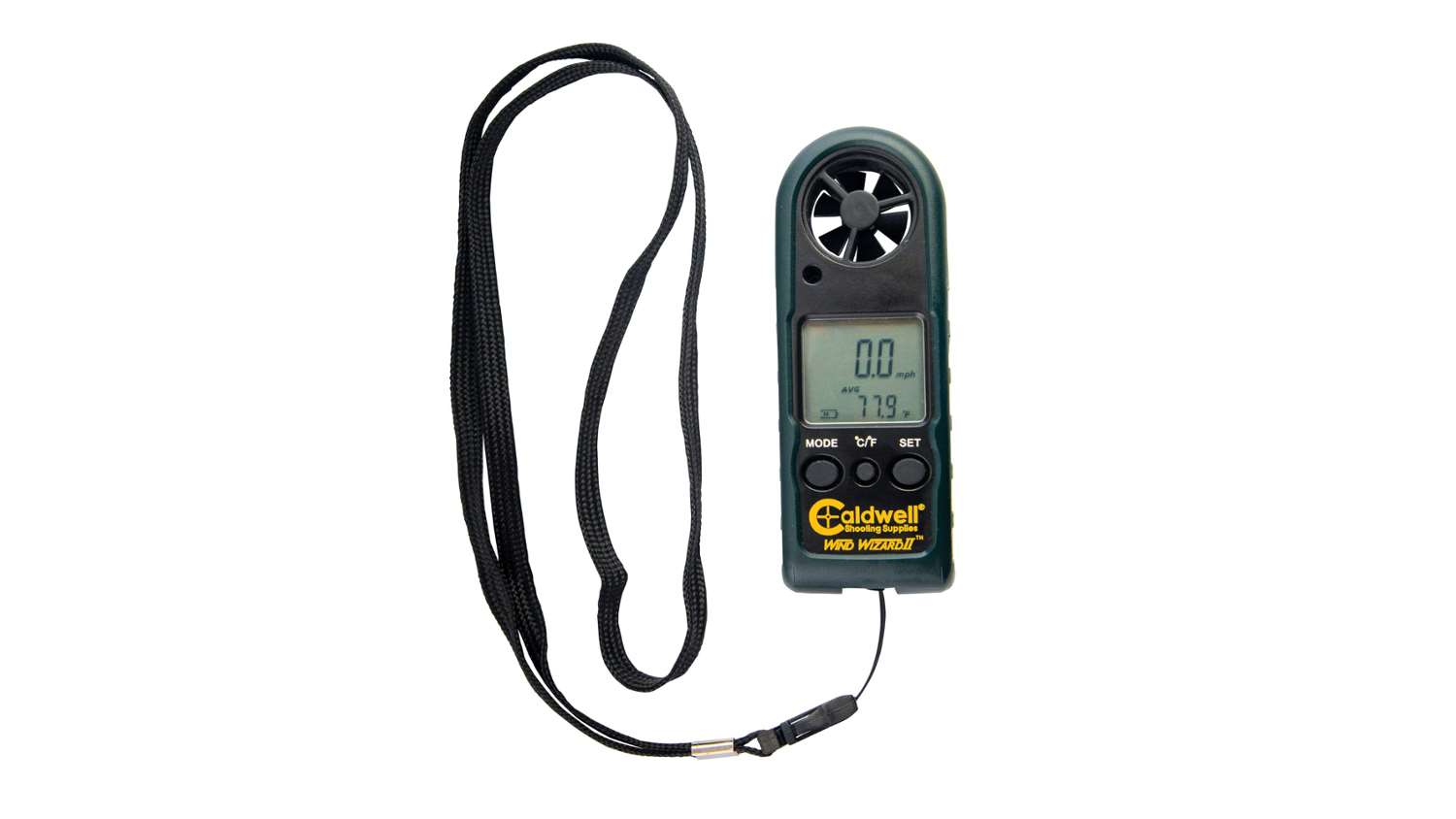
In addition to properly executing the fundamentals of rifle shooting (aiming, hold control, breath control, trigger control and follow-through), the critical F-Class skill is reading the wind. Wind meters, range flags, mirage and even blades of grass can be used to “dope” the wind, and ballistic tables can show the windage compensation required at any range. However, because crosswinds will vary in speed and direction over a 600- to 1,000-yard distance, as well as from shot-to-shot, wind reading is an art mastered only by frequent long-range practice.
If you are a beginner, don’t worry—match officials and other competitors will explain everything and help ensure that your initial F-Class experience is a good one. If you are already familiar with high power shooting, you’ll have no trouble adapting to F-Class competition. And the first time you launch a bullet at a target that seems impossibly small and distant—and hit the bullseye!—you’ll be hooked.
To find F-Class matches in your area, consult the “F-Class” and “Long-Range” rifle match listings in Shooting Sports USA's "Coming Events" section. The items mentioned in this article can be obtained from the manufacturers or from suppliers of quality competition products such as Brownells, Inc., MidwayUSA, Sinclair International and Creedmoor Sports, Inc.













